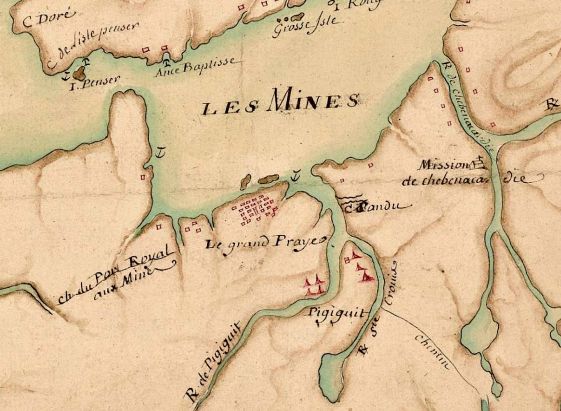Fort Edward Street Archaeological Resource Impact Assessment, 23 February 2022, By Jonathan Fowler
This post shares the Archaeological Resource Impact Assessment report for the proposed rezoning of two properties on Fort Edward Street. You can download the full report pdf below. Learn more about the proposal, and our Society’s response, for Rezoning Fort Edward here. You can also watch the presentation to West Hants Regional Municipality at council meeting as shared on Archaeology in Arcadie’s facebook page here.
Report Summary
In late 2021, the West Hants Regional Municipality retained Northeast Archaeological Research Inc. to conduct a Phase 1 Archaeological Resource Impact Assessment of two contiguous properties at 36 and 65 Fort Edward Street, Windsor, for the purpose of evaluating their archaeological potential.
Our study examined recorded archaeological sites in the Maritime Archaeological Resource Inventory (MARI), published histories, aerial photography, and archival records (cartographic and documentary) from local, national, and international repositories. A pedestrian survey was conducted on 12 February 2022 to examine surface conditions and collect survey points to assist in georeferencing historical maps.
Our assessment concludes that these properties very likely contain archaeological resources associated with Mi’kmaw, Acadian, and British activities dating from the early colonial period and possibly earlier. This meeting point of major rivers and terminus of major portage routes linking the Fundy system to the Atlantic coast was long inhabited by the Mi’kmaq and their ancestors. By the mid-18 th century, the Mi’kmaq regularly frequented a trading post (or truckhouse) adjacent to the properties in question. It was one of only six posts in the region that functioned as part of the 1760-61 Treaties of Peace and Friendship between the Mi’kmaq and the British Crown.
In 1722, the Acadians built a parish church just uphill from the two properties. The British demolished it to make way for Fort Edward in 1750. Between 1755 and 1763, Fort Edward functioned as a prison for hundreds of Acadians caught up in the deportations.
Significant fort infrastructure was located outside the ramparts and 18 th century maps indicate that some of these structures stood in the properties in question. The two properties are part of the viewplanes Parks Canada identifies as essential to the commemorative integrity of Fort Edward National Historic Site. From 1765 and up to recent times, the two properties were the site of the Windsor Agricultural Fair, Canada’s oldest, which was designated a national historic event by the Historic Sites and Monuments Board of Canada in 1935.
Construction on these properties in the 20 th century has likely impacted the integrity of some archaeological resources, but material cultural evidence is almost certainly still present, some in secondary contexts.
Based on these findings, it is recommended that any future construction activities on these properties be subject to a thorough Phase 2 Archaeological Resource Impact Assessment, including engagement with the Mi’kmaw and Acadian communities. Viewplanes essential to Fort Edward’s commemorative integrity should be respected. The phase 2 archaeological assessment would benefit from archaeological geophysical prospection, subsurface testing, and monitoring of mechanical excavations.

